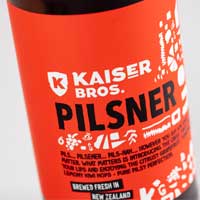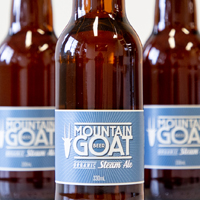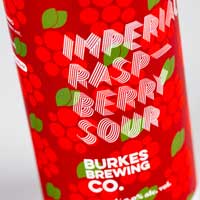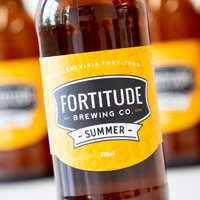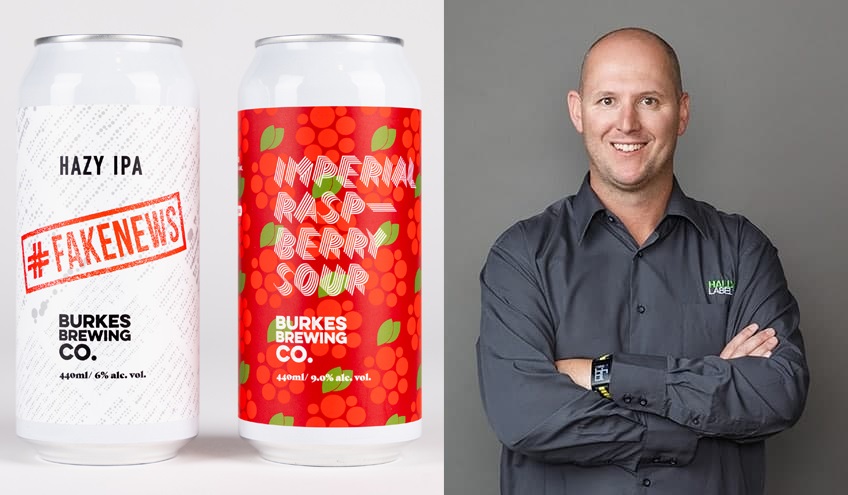
Q&A: Custom Craft Beer Labels
We sit down for a Q&A with our in-house craft beer label expert Ryan Granger. Find out his top tips and recommendations to choose the right custom labelling option for your brew.
Craft beer continues its rise in popularity, not just in New Zealand and Australia, but worldwide. There are more than 200 craft breweries in New Zealand alone and the market continues to grow. The Australian craft beer movement is also experiencing continuous growth, despite consumption of beer and alcohol overall in decline.
With competition being fierce, limited shelf-space and more new products hitting the shelf every month, it's even more important that you have a label that's not only fit-for-purpose but sets your brand apart.
Here we talk to our in-house craft beer labelling expert, Ryan Granger. He's a 20-year veteran at Hally and has a wealth of technical knowledge and experience with labels and labelling. Ryan has worked closely with many of our brewery clients helping them choose the right material, adhesive and embellishments, working through technical challenges, and dealing with application equipment on site. Ryan is also experienced in taste-testing the odd craft beer too!
The questions we’ve put to him:
- What are the three biggest benefits of using a self-adhesive label and why?
- What are the main craft beer label trends at the moment?
- What labelling tips can you recommend when designing your craft beer label?
- What are three hard-to-spot pitfalls that are critical to avoid?
- Looking out three to five years, beyond the obvious trends, what do you think will be the next big change in craft beer labelling?
Read on for his top tips and recommendations…
What are the three biggest benefits of using a self-adhesive label to package your craft beer and why?
- The beauty of self-adhesive (or pressure sensitive) labels is that they give the brand owner all the flexibility required to achieve maximum on-shelf impact. At the same time they have the durability to promote the brand from the time it is labelled to the time it is in their consumer's hand being opened.
- Cans are becoming more prominent over bottles in the Craft Beer industry, with breweries promoting their benefits in taste and recyclability. Using labels on blank cans is a great way to keep inventories of pre-printed cans down, plus give flexibility to make and market specialty products without having to consider can printing lead times and set up costs. Shrink sleeves can also be used on cans to give a great no-label look, but they are restricted to having the one type of finish (dictated by the glossiness of the film being used). The same can be said for pre-printed cans. Using a self-adhesive label opens up all the possibilities you could think of. You can add a texture, foil or even an emboss pattern either to the whole label or just certain parts. (request one of our free craft beer label sample packs to see some of the possibilities)
- The wine industry puts a lot of emphasis on creating textures on labels so when the consumer handles the bottle it has a premium feel and creates interaction. Wine bottles are potentially only handled 3 to 4 times before they are discarded, whereas single serve beer cans or bottles are either held once every drink to pour into another vessel, or held while the beverage is being consumed. Knowing that the craft beer can or bottle is going to be interacting with the customer on a more regular basis, it creates opportunities for brand owners to interact with their consumer and to emphasise the quality and brand values by using textures and eye-catching effects that can only be achieved by applying labels.
What are the main craft beer label trends at the moment?
We are still seeing provenance as a key selling point. Stating where the beer is brewed and by who helps generate a connection with the consumer, while at the same time distancing the brand from the mainstream brewers.
Using the label to tell a unique story about the brewer, the beer and the brand origins are common themes. This allows the brand owner to connect with the consumer through quirky or unique stories. Bold colours and illustrations with multiple elements are popular also. Promoting the type of beer is the main aim with the brewery's brand normally a secondary element on the label.
We are starting to see more premium elements being printed on craft beer labels; foils, raised coatings and textured papers are all starting to appear on the shelves. Inventive designs and finishes that push the envelope will continue to gain ground such as colour-changing inks and specialty wood grain materials.
What labelling tips can you recommend when designing your craft beer label that you'd only share with a close friend (and everyone reading this blog)?
Think about how the label will look on the shelf and then with the consumer. Using lower grade papers are cost effective but we have all had experiences where there are blank bottles of beer in the bottom of a chilly bin (or Esky for our Aussie friends) where the labels are floating on top of the melted ice!
Using a synthetic label material is a great way to ensure the label looks its best for the lifecycle of the beer. Using tactile and raised coatings is a good way of giving the label a kraft or paper feel while ensuring your brand retains its integrity even when covered in ice!
The size of the label is important and bigger is not always better. Most bottles will have a "label panel" on them, which is the area that the bottle producers recommend that you keep your label size within. This is because the area is flat and smooth and will be far enough away from the raised areas of the bottle to allow for any inconsistencies in label application.
Utilising digital printing technology is a great way to give those experimental and seasonal products a high quality finish whilst keeping set up costs down that can sometimes be prohibitive for small batch quantities. Also if you are promoting your product at a festival or event, use the digital technology to personalise your products for maximum impact (check out Hally Personalisation for more). Again the set up costs are minimised but you can take your brand to the next level by customising the design for the event or even making every label unique that could be a souvenir to keep.
What are three hard-to-spot pitfalls that are critical to avoid when creating your craft beer label?
- Take into account how the labels will be applied to the bottles or cans. Will they be wet or dry at the time of application? This will allow us to ensure the correct adhesive and material is used.
- When thinking about the finish of your label, think about how it is going to look on the shelf. Sometimes high gloss labels in a retail environment can look "glarey" and the elements you have put time into looking great on your proof can be lost on the shelf. Matt finishes are very popular at the moment.
- If you want to stand out on the shelf, take the time to research and know what other packaging in your category looks like. Then design your labels to be on trend but not blend in with the other products on the shelf.
Looking out three to five years, beyond the obvious trends, what do you think will be the next big change in craft beer labelling?
Brand security and traceability are likely to become more important. As the leaders in the craft beer industry look to overseas markets, ensuring the security of their brand is going to be a high priority. There are plenty of examples of premium Kiwi and Aussie brands overseas being copied and sold in place of the real product.
Creating interactivity with the consumer and being open about the supply chain of product is likely to start appearing also. Many larger food companies do this now to create transparency about the origins of their products. Craft brewers will want to do this to build upon the strong provenance theme we see on the packaging now. There is technology available to customise labels so the consumer can scan the bottle with an app and then zoom into the field the hops were grown in and where the beer was bottled.
With the craft beer category performing well, there are many great beers to discover with some imaginative custom labels. Ryan and our broader team of label experts are available to talk all things craft beer. Their contact details can be found on the pages below:
Auckland | Brisbane | Christchurch | Melbourne | Sydney


 1800 773 331
1800 773 331 0800 152 162
0800 152 162